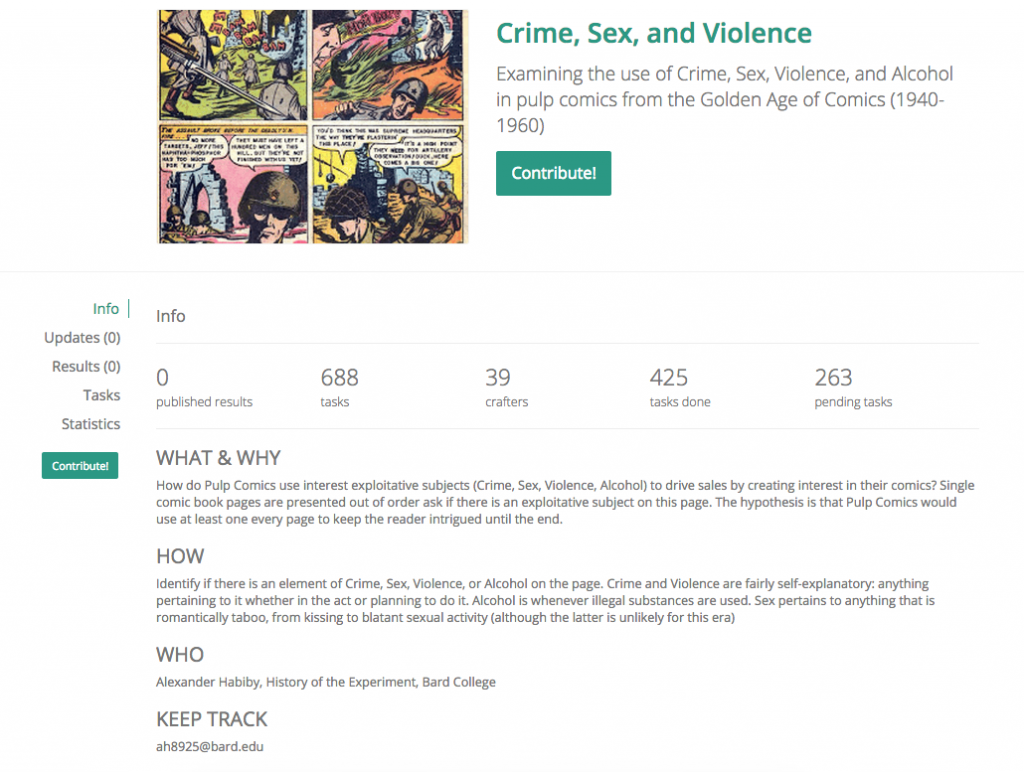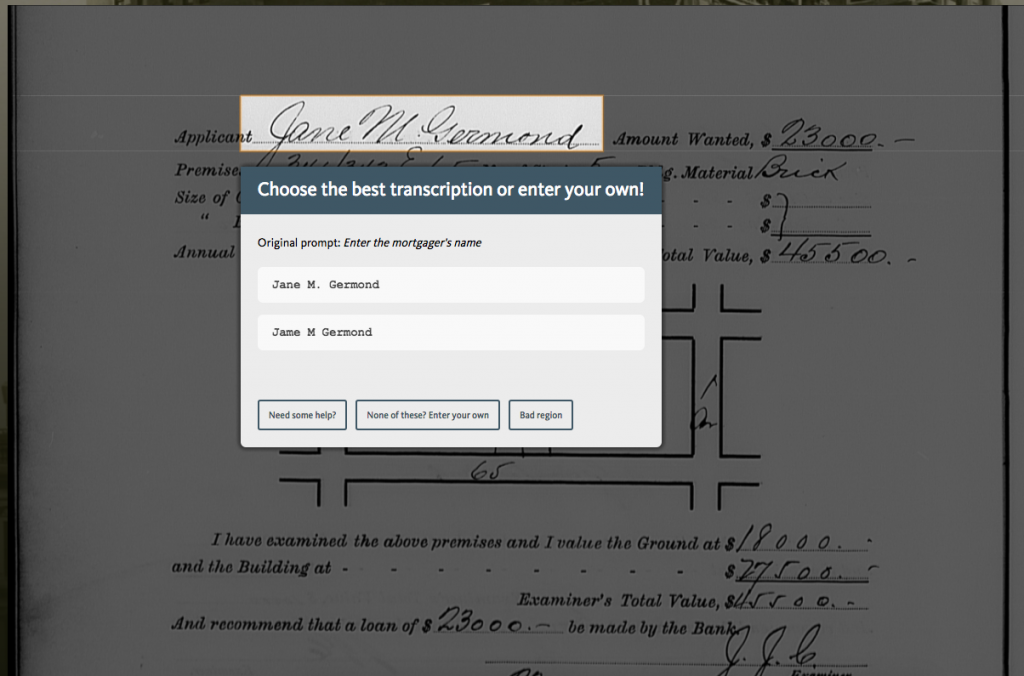All information for these resources were taken from the project’s websites, about pages, documentation, or Github sites
Crowdcrafting
- A web-based service that invites volunteers to contribute to scientific projects developed by citizens, professionals or institutions that need help to solve problems, analyze data or complete challenging tasks that can’t be done by machines alone, but require human intelligence
- Anyone can create a new project or contribute to an existing project in Crowdcrafting
- Each project has an information page that has basic descriptions of what & why, how, who, and contact information
- Can publish updates on the project, as well as keep track of how far along the project is
- Can set tasks that need to be completed
Crowdcrafting is useful for
- Crowdsourced projects revolving around images, sounds, videos, PDFs, or tweets
- Can then choose whether you would like contributors to classify, describe, count, or identify the items
Things to watch out for
- Made by scientists, not by humanists
- The metadata you can input is very limited – very basic description of the project and your goals, text fields have character limits
- No review stage – owner of project can’t review transcription/classification/etc before it is marked as completed
- Cannot upload files from desktop because they do not host files themselves – have to have Dropbox or Flickr
Project that uses Crowdcrafting: Crime, Sex, and Violence
- Examines the use of crime, sex, violence, and alcohol in pulp comics from the golden age of comics, 1940-1960
- Presents you with a single page that you have to classify as either crime, sex (anything romantically taboo), violence, alcohol (whenever illegal substances are used), advertisement, or none
Scripto
- Offered as a plugin for Omeka, WordPress, and Drupal, or any other existing content management system that incorporates document, image, and/or multimedia files
- Allows registered users to view digital files and transcribe them with an easy to use toolbar, rendering that text searchable
- Includes versioning history and editorial controls to make public contributions more manageable
- Requires a dedicated instance of MediaWiki
- Adds the power of wiki technology to the content management system in order to facilitate the transcription of documents
- Two principal functions: editing and transcribing
Scripto is useful for
- Transcription of images and documents
- Designed for institutions and organizations like libraries and museums for small and large scale transcription projects
Things to watch out for
- Mediawiki has a slight learning curve
Project that uses Scripto: Papers of the War Department
- PWD has made 45,000+ documents of the early War Department (1784-1800) freely available
- Each document has extensive and searchable metadata linked to digitized images of each documents
- Apart from simply transcribing, contributors also help improve searchability of documents
- Uses a slightly customized version of Scripto
Might also want to check out Making History – Transcribe and DIYHistory – both projects use the Scripto plugin with Omeka
Scribe
- Began at NYPL Labs and Zooniverse
- Configurable, open source framework for setting up community transcription projects
- Establishes the foundation for a developer to configure and launch a project more easily than starting from scratch
- Breaks the work of the crowd into three task flows: marking (identifying document structure), transcription (data entry), and verification (quality control)
- Accuracy further ensured by automated transcription analysis that helps determine consensus among contributors
Scribe is useful for
- Transcription projects for handwritten or other OCR-resistant texts
- Particularly geared toward DH, library, and citizen science projects seeking to extract highly structured data from a set of digitized materials (manuscripts, ledgers, catalog cards, etc)
- Projects that involve a division of labor intended to lower barriers to participation and to ensure higher quality results
- In order to ensure Scribe is correct for your project, you have to be able to answer yes to all of the following questions:
- You have a collection of digital images that you’d like to extract information from, but you don’t have the resources to do so yourself
- You are not looking for full text transcription of your images; rather, you would like to collect specific partial text or metadata from your images
- You or a member of your team has basic web development experience, specifically with creating a Rails web application
Things to watch out for
- Requires a developer/someone familiar with Github and code
Project that uses Scribe: Emigrant City
- Emigrant Bank founded 1850 by members of the Irish Emigrant society to serve the needs of the Irish immigrant community in New York
- Bank grew to become the seventh largest bank in the US
- Donated to NYPL archival records that are valuable historical and genealogical resources documenting the lives of immigrant families
- Goal of Emigrant City transcription initiative is to produce structured, building-level records for ~6,400 digitized mortgages
- Contributors can mark, transcribe, or verify documents within the collection







